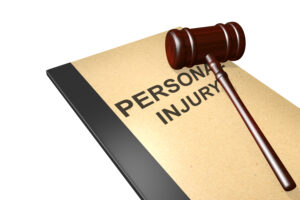Posted in Personal injury
 When one begins a personal injury case with an attorney, the client focuses on treating and recovering from their injury. They’ll see the necessary medical professionals so they can get back to their normal daily routine as soon as possible. The attorney, however, does the heavy lifting: gathering the evidence so they can make a strong argument in your favor to get the best compensation possible. In order to accomplish that, the attorney and the attorney’s team will perform a series of lengthy investigations in order to siphon information from the event that can be used to argue for your case. Below are a couple of those processes:
When one begins a personal injury case with an attorney, the client focuses on treating and recovering from their injury. They’ll see the necessary medical professionals so they can get back to their normal daily routine as soon as possible. The attorney, however, does the heavy lifting: gathering the evidence so they can make a strong argument in your favor to get the best compensation possible. In order to accomplish that, the attorney and the attorney’s team will perform a series of lengthy investigations in order to siphon information from the event that can be used to argue for your case. Below are a couple of those processes:
Discovery process: As the word implies, this process is an exchange of information between parties in which your attorney gets to discover what kind of person/organization the other party is. In knowing this information, your attorney can make certain accusations or strengthen his/her argument by making connections between the evidence and the “discovered” information. Say in the case of a large grocery chain, an attorney would be able to request policy documents, employee records, and surveillance recordings to determine how rigorous their cleaning standards are in order to determine how negligent they are when it comes to liquid spills for a slip and fall case.
Investigation of the scene: Sometimes it’s better to get info from the horse’s mouth so to speak. This is accomplished by visiting the scene of the accident itself. By examining the area where the accident happened, one can get a better idea as to how the accident happened and get an understanding of how environmental factors may have factored into the accident or how they might have influenced the defendant to inadvertently initiate the accident.
Surveillance footage: Whether it’s road traffic, a restaurant, or a public venue, a great way to get an idea of what happened at the scene of an accident is to view video footage of the event. The only setback is that the angle of the footage provided may not provide the full picture of the situation…
Recorded eye witness statements: …which is why it’s great to have eyewitnesses to fill in the blanks. Eyewitness accounts without conflicts of interests are among the most trusted sources of information in the court system and law firms will go out of their way to track them down to get written or recorded statements that’ll shift the tide of the case.


